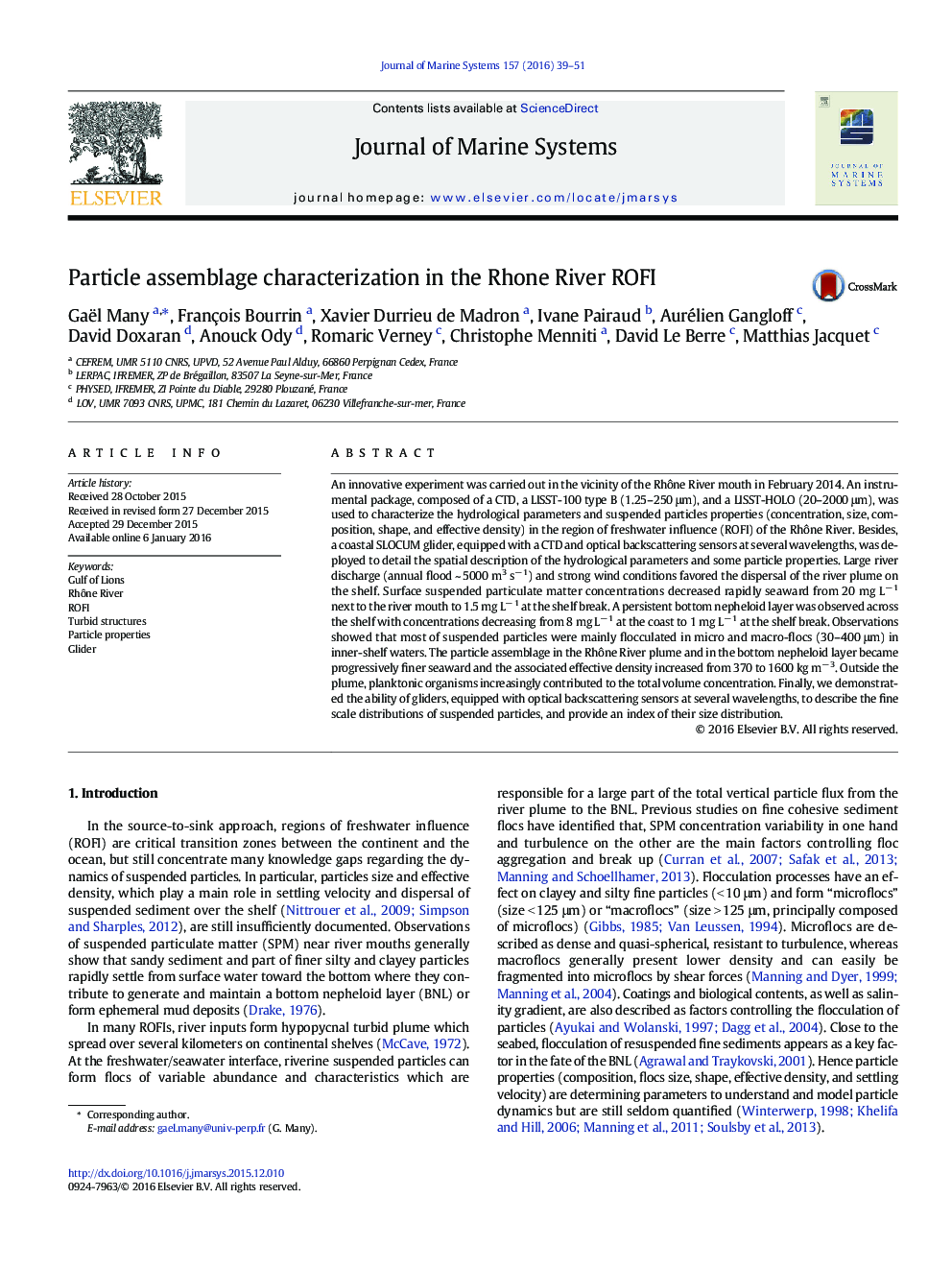| Article ID | Journal | Published Year | Pages | File Type |
|---|---|---|---|---|
| 4547923 | Journal of Marine Systems | 2016 | 13 Pages |
•Description of the suspended particles size distribution in the Rhône River ROFI.•Evidence of fine-grained flocculation in the surface and bottom nepheloid layers.•Evidence of seaward gradient of particle concentration, size, and effective density.•Verification of the ability to measure an index of particle size from a glider.
An innovative experiment was carried out in the vicinity of the Rhône River mouth in February 2014. An instrumental package, composed of a CTD, a LISST-100 type B (1.25–250 μm), and a LISST-HOLO (20–2000 μm), was used to characterize the hydrological parameters and suspended particles properties (concentration, size, composition, shape, and effective density) in the region of freshwater influence (ROFI) of the Rhône River. Besides, a coastal SLOCUM glider, equipped with a CTD and optical backscattering sensors at several wavelengths, was deployed to detail the spatial description of the hydrological parameters and some particle properties. Large river discharge (annual flood ~ 5000 m3 s− 1) and strong wind conditions favored the dispersal of the river plume on the shelf. Surface suspended particulate matter concentrations decreased rapidly seaward from 20 mg L− 1 next to the river mouth to 1.5 mg L− 1 at the shelf break. A persistent bottom nepheloid layer was observed across the shelf with concentrations decreasing from 8 mg L− 1 at the coast to 1 mg L− 1 at the shelf break. Observations showed that most of suspended particles were mainly flocculated in micro and macro-flocs (30–400 μm) in inner-shelf waters. The particle assemblage in the Rhône River plume and in the bottom nepheloid layer became progressively finer seaward and the associated effective density increased from 370 to 1600 kg m− 3. Outside the plume, planktonic organisms increasingly contributed to the total volume concentration. Finally, we demonstrated the ability of gliders, equipped with optical backscattering sensors at several wavelengths, to describe the fine scale distributions of suspended particles, and provide an index of their size distribution.
